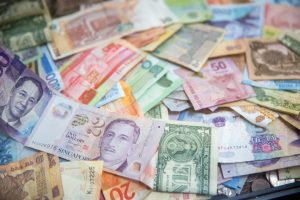In the world of forex trading, managing risk and maximizing profits are the keys to success. One of the most important aspects of managing risk is determining your stop loss and take profit levels. These levels will help you minimize losses and lock in profits, respectively. In this article, we will discuss how to determine stop loss and take profit in forex trading.
What is Stop Loss?
A stop loss is a pre-determined level at which a trader will exit a trade to minimize losses. It is an order that is placed with a broker to sell a currency pair when it reaches a certain price level. Stop losses are an essential part of any trading strategy as they help traders limit their losses and protect their trading capital.
Determining Stop Loss
There are several methods that traders use to determine their stop loss levels. One popular method is the percentage method. This method involves setting a stop loss level based on a percentage of the trader’s account balance. For example, a trader may set a stop loss at 2% of their account balance. If their account balance is $10,000, their stop loss would be $200.
Another method is the volatility method. This method involves setting a stop loss based on the volatility of the currency pair. Traders can use indicators such as Bollinger Bands or Average True Range (ATR) to determine the volatility of the currency pair. The stop loss level is then set at a distance from the entry price based on the volatility of the currency pair.
The chart method is another popular method for determining stop loss levels. This method involves setting a stop loss based on key levels of support and resistance on the chart. Traders can use technical analysis tools such as trend lines, moving averages, and Fibonacci retracements to identify these levels.
What is Take Profit?
Take profit is a pre-determined level at which a trader will exit a trade to lock in profits. It is an order that is placed with a broker to sell a currency pair when it reaches a certain price level. Take profit levels are also an essential part of any trading strategy as they help traders maximize their profits.
Determining Take Profit
There are several methods that traders use to determine their take profit levels. One popular method is the reward-to-risk ratio method. This method involves setting a take profit level based on a reward-to-risk ratio of at least 2:1. For example, if a trader sets their stop loss at $200, their take profit would be set at a distance from the entry price that would result in a profit of at least $400.
Another method is the chart method. This method involves setting a take profit based on key levels of support and resistance on the chart. Traders can use technical analysis tools such as trend lines, moving averages, and Fibonacci retracements to identify these levels.
The volatility method is also used to determine take profit levels. Traders can use indicators such as Bollinger Bands or Average True Range (ATR) to determine the volatility of the currency pair. The take profit level is then set at a distance from the entry price based on the volatility of the currency pair.
Conclusion
In conclusion, determining stop loss and take profit levels is an essential part of any trading strategy. Traders can use various methods to determine these levels, including the percentage method, volatility method, chart method, and reward-to-risk ratio method. It is important to remember that stop loss and take profit levels should be set based on the trader’s risk tolerance, trading style, and market conditions. With proper risk management, traders can minimize losses and maximize profits in the world of forex trading.





